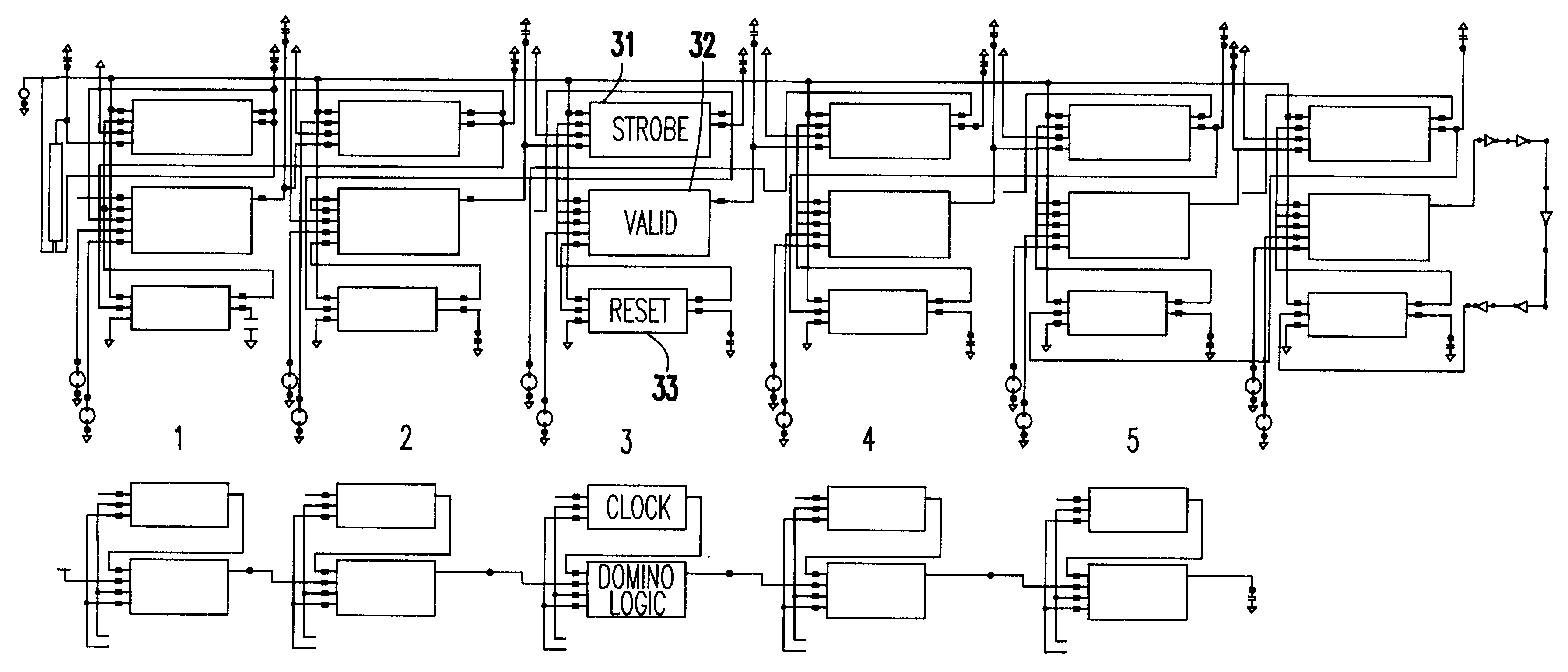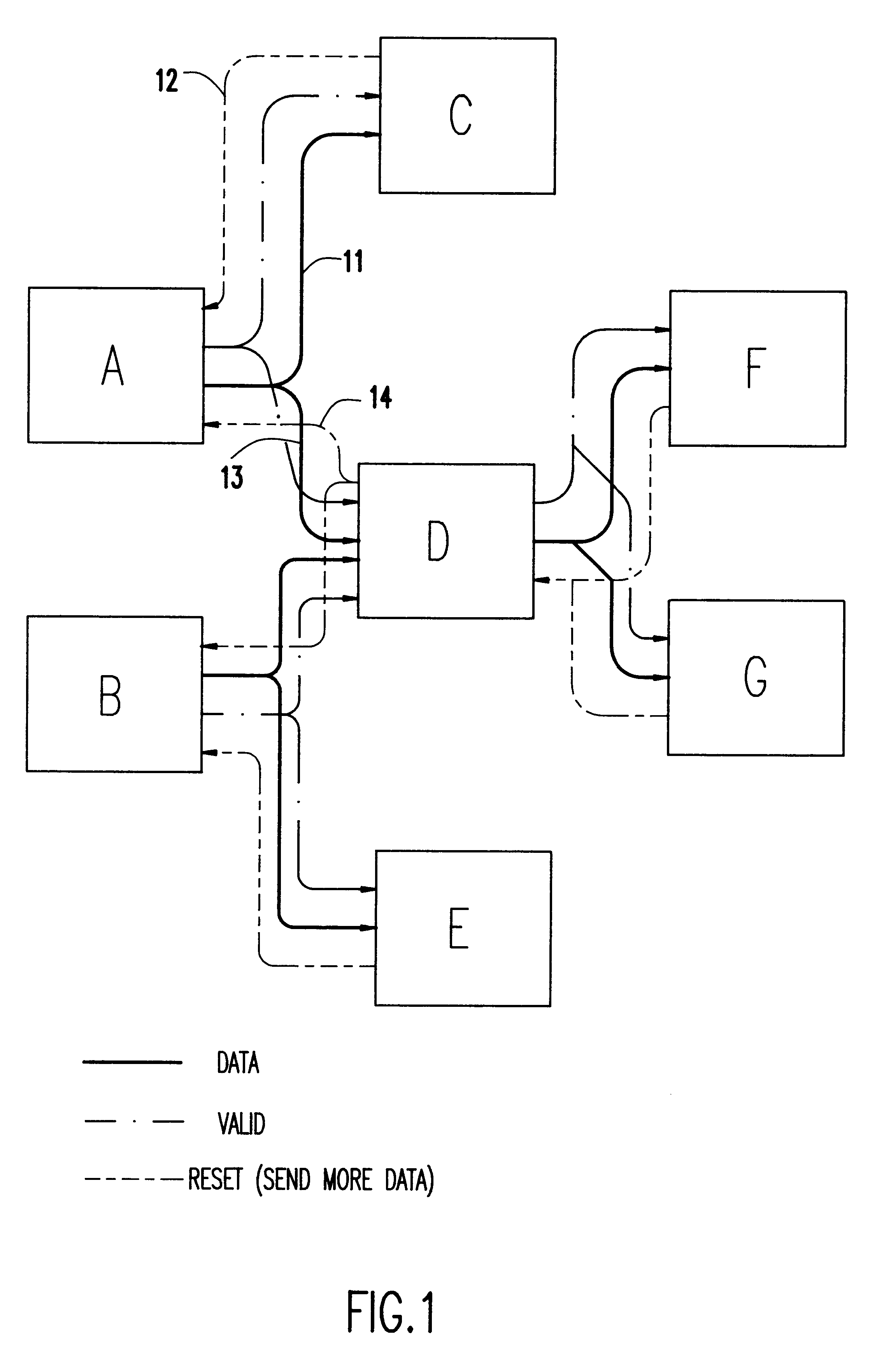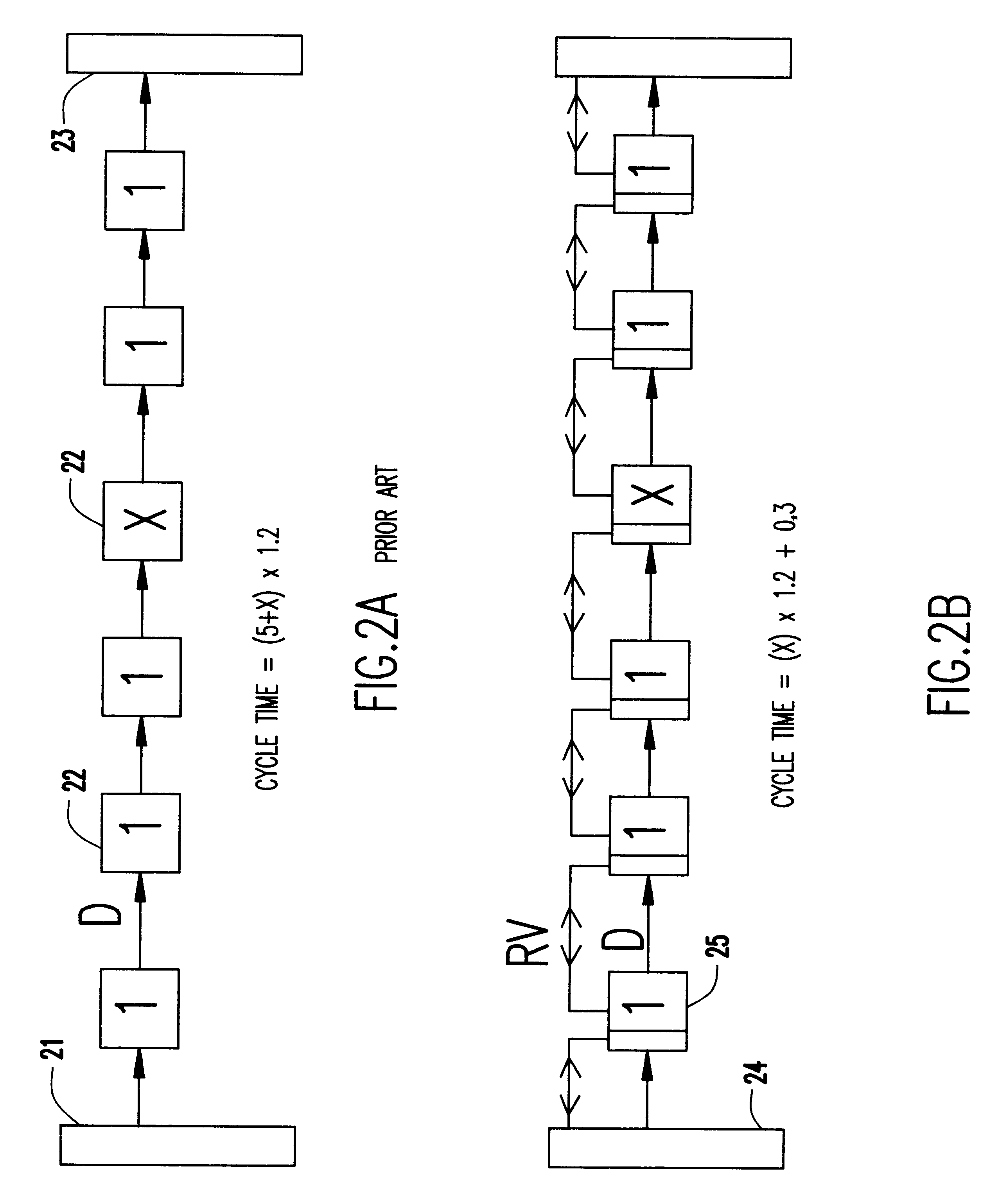Interlocked pipelined CMOS
a pipelined, logic circuit technology, applied in the direction of generating/distributing signals, instruments, program control, etc., can solve the problems of insufficient delay, insufficient delay, and circuit will not perform the intended function
- Summary
- Abstract
- Description
- Claims
- Application Information
AI Technical Summary
Problems solved by technology
Method used
Image
Examples
Embodiment Construction
Referring now to the drawings, and more particularly to FIG. 1, there is shown a block diagram which, at the global macro level, is helpful in understanding how the interlocking and handshaking of the IPCMOS circuits according to the invention works. As shown in FIG. 1, between each of the macros, labeled A through G, that are transmitting and receiving data there are two additional signal lines. Between macros A and C, for example, these are a forward direction signal line 11 and a reverse direction signal line 12. Similarly, between macros A and D, these are a forward direction signal line 13 (which may be common with signal line 11) and a reverse direction signal line 14. In the forward direction, the additional signal from the transmitting macro signifies that the data coming from this macro has reached a valid state; whereas in the reverse direction the additional reset signal from the receiving macro signifies that the data has been received. Thus, there is handshaking or inte...
PUM
 Login to View More
Login to View More Abstract
Description
Claims
Application Information
 Login to View More
Login to View More - R&D
- Intellectual Property
- Life Sciences
- Materials
- Tech Scout
- Unparalleled Data Quality
- Higher Quality Content
- 60% Fewer Hallucinations
Browse by: Latest US Patents, China's latest patents, Technical Efficacy Thesaurus, Application Domain, Technology Topic, Popular Technical Reports.
© 2025 PatSnap. All rights reserved.Legal|Privacy policy|Modern Slavery Act Transparency Statement|Sitemap|About US| Contact US: help@patsnap.com



